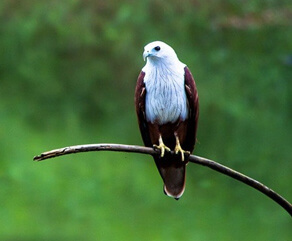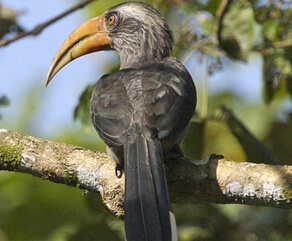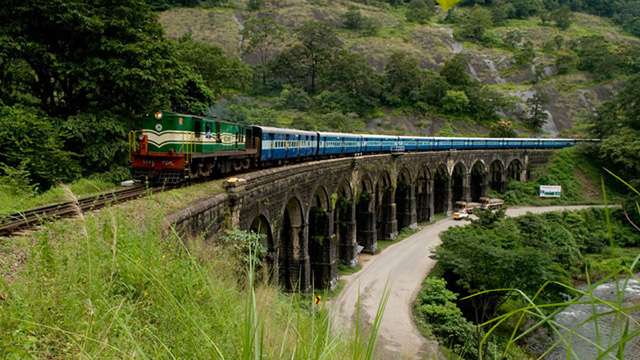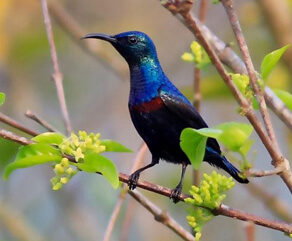Blessed with so many natural wonders, Thattekad is a picturesque destination, masked in the glory of abundant flora and fauna. This wonderful place is positioned on the Njiyapilli Hill and is mainly famous for the Salim Ali Bird Sanctuary, named after the great Ornithologist, Dr. Salim Ali. This sanctuary was established in the year 1983 by the Kerala Government, on recommendation of Dr. Salim Ali in the early 1930s. This is the most popular bird sanctuary of India and houses about 280 rare species of water and land birds.
The scenic beauty of Thattekad Bird Sanctuary cannot be described in words, it can only be felt and enjoyed! Visit India's most beautiful,
Thattekad Bird Sanctuary and catch a glimpse of some of the most amazing birds and their landscapes that are hard to overlook. Sprawling over 25 km sq and at the distance of around 60 km towards the north-east of Kochi, Thattekkad Bird Sanctuary is located in the Kothamangalam Taluk of Ernakulam district on the northern bank of the Periyar River. In the year 1930, Dr. Salim Ali discovered Thattekad as the richest bird habitat of peninsular India and it was named as a Bird Sanctuary in the year 1983. Since the forest is covered with a huge variety of tropical deciduous and evergreen tree, it offers a safe paradise for birds. Hence, it's an interesting place to visit for birdies and wildlife enthusiasts.
FLORA & FAUNA
The sanctuary is home to Ashy Wood Swallow, Black Headed Oriole, Ash Tail, Ashly Drongo, Bronzed Drongo, Blue Kingfisher, Bronze Winged Jacana, Ceylon Frogmouth, Created Woodpecker, Crested Goshawk, Changeable Hawk Eagle, Chestnut Headed Bee Eater, Coucal, Dollar Bird, Emerald Dove, Eurasian,Golden Oriole, Greater Raquet Tailed Drongo, Lora, Orange Minivet, White Breasted Woodpecker, Jungle Myna, common Myna, Indian Pitta, Jerdons Nightjar, Indian Cuckoo, Yellow-browed Bulbuls, Darters, Sunbird, Shrike, and many more.

MUST SEE PLACES & THINGS TO DO IN AND AROUND
Most exciting part about birdwatching holiday in Thattekad Bird Sanctuary is that here one get an opportunity to do kayaking. Apart from enjoying the birdwatching safari, one should visit some attractions near Thattekad Bird Sanctuary like Nadukani, Bhoothathankettu, Malayattoor, Kodanad, Kalady, Wellington Island, Bolgatty, Mattancherry, etc.

HOTELS IN AND AROUND THATTEKAD SANCTUARY
For a perfect bird watching vacation, there's nothing better than the iconic Thattekkadu Bird Sanctuary of Ernakulam. There are a lot of accommodation options available within the sanctuary, that offers the most relaxing stay to the visitors. One can find a Forest Department inspection bungalow 'Hornbill', and a dormitory inside the forest area to give the tourist a better access to the jungle. For people who want to stay a little away from the sanctuary can book a homestay or lodge in Kothamangalam. The three-story watch tower inside the sanctuary also offers stay facilities to the people with two beds, a toilet, and a kitchen. To adventure freaks who want to spend a night in tents nearby the jungle area can take camp facilities outside the sanctuary on the Southern side of the river.
INTERESTING FACTS
- Thattekad is a home to one of the most popular bird sanctuary in India ‘Salim Ali Bird Sanctuary’
- Thattekad is one of the best spots for birding in India
- The sanctuary is named after the great Ornithologist, Dr. Salim Ali, who found that this area attracts the highest number of birds in India
- There are more than 500 species of birds in the sanctuary, along with a few wild animals like elephants, leopards, sloths, and other mammals
- This area has a large quantity of teak and mahogany cultivated
- The forest has Sloth bears, Porcupines, leopards, elephants, and many such mammals living
- Around 250 bird species have been recorded in the small area
















